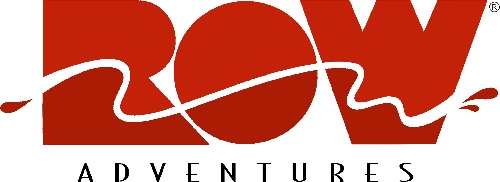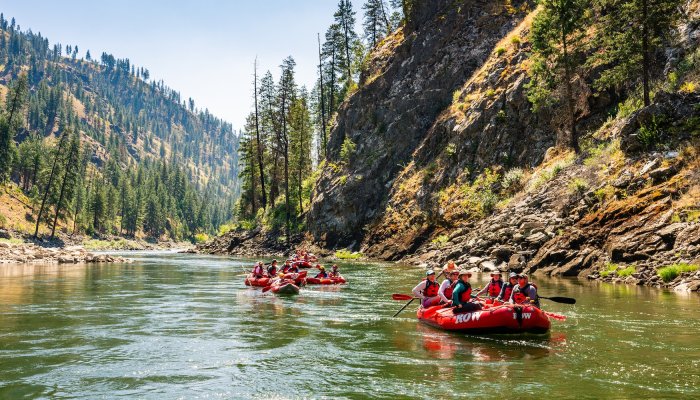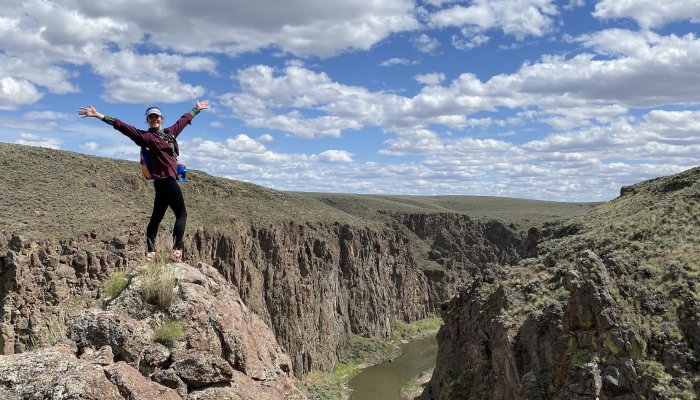Lessons From the River

Language Shapes Perception
Language is so fundamental to our perception of the world. Even the grammatical syntax can underlie ingrained biases you never knew you had.
Romantic languages like French and Spanish gender every noun, which I believe creates a much more heavily gendered perception of the world. A lot of indigenous languages are grammatically composed primarily of verbs as opposed to English which is composed primarily of nouns.
This simple shift, denoting a rock or river as a verb, breathes animacy and respect for life into what English would reduce to an object. Languages are difficult to learn for a reason. You aren’t just learning a form of communication; you are immersing yourself in a rich culture that spans countless lifetimes, stories, and experiences.
It’s an endeavor that will leave your perception of the world forever changed. Reading water, I’ve come to realize, feels like a language in and of itself. The practice of learning to understand it has redefined my relationship to natural landscapes.
Learning to Read the River
At the beginning of my first season guiding, I was absolutely terrified of whitewater. I remember scouting rapids before we ran them when I was in guide school. Our instructors would be pointing out different features like holes, tongues, and standing waves as they tried to describe the pathway through a rapid.
I would nod my head and pretend I could see what they could when, in reality, all I saw was an angry mass of frothing whitewater crashing in chaotic disarray. It just looked like this barrage of water that would have its way with me and my boat, no matter what I attempted with a paddle.
Trying to comprehend the churning mass before me was the equivalent of trying to understand a book laid out in a foreign language that I couldn’t even say hello in.
Immersion and Understanding
I chose to immerse myself in this foreign country—this barreling force that changes everything it touches, while never touching the same thing twice. And eventually, I began to comprehend this story unfolding before my eyes.
Surprisingly, I found that the roots of understanding this language lay in the flatwater. It rested in the ability to understand the animacy occurring in the sections of the river that felt still.
Flatwater still has a pulse, a current winding through. Learning to understand water is learning to understand the most efficient line of movement the water can take. The ability to guide a boat lies in the ability to maneuver the boat along this efficient path laid out before you.
Finding Voice in the Current
It’s one thing to be able to understand a language spoken at you, but it’s another to be able to speak it back. Translating the movement of water also presents these multi-faceted difficulties. I could see lines through rapids far before I could effectively maneuver a boat to follow them. Adding a boat to the equation adds another level of complexity to a constantly moving puzzle.
You have to sit in this foreign object and quickly try to learn how the water will move it and turn it; how the boat will respond to this animacy. As a guide, your goal is to work with the river’s current–not against it.
Muscle can’t outmaneuver the pull of a river but can quickly exhaust you. But if you can learn to coordinate the angles of your boat with the angles of the current in rapids, you can work with the river to guide yourself through a rapid.
Slowly, with practice, patterns reveal themselves in this flurry of whitewash and you can both understand this path and speak it back.
Lingering Lessons from the River
I find myself enchanted by the movement of water in a way I don’t think I was capable of observing before. This interplay of fluid and gravity mingles with its surroundings in a dance and I am the captivated audience.
This language I have learned from rivers has infused my senses. I see microcosms of rivers in downpours that form tiny, muddy streams in roadside gutters. I watch them pillow and divide around pebbles and gravel while searching for the deepest channel in concrete.
I see the ghost of water seepage on tufas, these snake-like projections on limestone that were carved by rain. Even when climbing these features, I’m traversing a pathway that water had already traced before me and will continue to trace long after I leave.
l can tell when I’m approaching a creek long before I hear the water babble because I can see the color gradient of foliage change. The deepest most vibrant green lights up the path of the creek in bright green rivulets snaking down the hillside.
In so many different mediums I find myself observing pathways that water has carved in this world and consciously choosing to follow them. It’s taught me that the path of least resistance isn’t often a product of laziness but rather a result of tuning into and working with the gradient of your environment.
While I am by no means fluent—nor will I ever be—in the workings of water, I am grateful for what guiding has given me. At the very least, it has enhanced my ability to translate and immerse myself in the story of running water. As I think about the prospect of entering my fourth season of raft guiding this summer, I am giddy at the thought of how it will leave me, yet again, changed.







